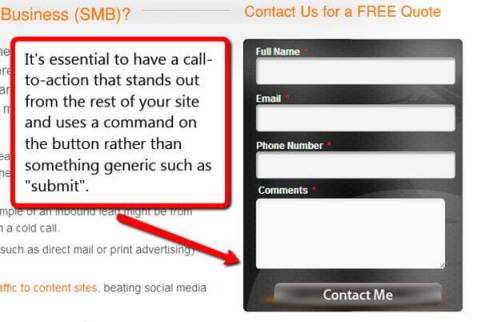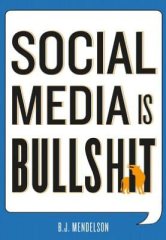blog
7 Reasons Why Your Digital Content May Be Turning People Away

© Can Stock Photo
With all that technology offers, it’s easy to lose its advantages when people cannot read your digital content. What do I mean by that?
Let’s look at some of the reasons why your content may be turning people away:
1. The font type is too small.
Depending on who you’re targeting with your digital content marketing, there are plenty of those who cannot read fine print sizes without special glasses, or at all. Approximately 14 million individuals in the United States aged 12 years and older are visually impaired. In addition, most people will develop presbyopia around the age of 40, or even younger. Presbyopia is the difficulty in seeing things near.
As diabetes cases increase and the population ages, presbyopia numbers will increase, too. Then, factor in the size of people’s screens, especially mobile devices. Using small font types because they look pretty may be a barrier to the audiences you’re trying to engage.
2. The font type is too light.
You’ve probably seen Web sites and blogs that use a light gray font on a white background. Look at this example and see if it’s difficult to read. What do YOU think?
3. There’s a lot of white reverse font on a dark background.
Another challenging content design flaw is reading white reverse font on a dark background. It may be OK for short content, but not OK for an entire page of it. Here’s what it looks like:
4. The paragraphs are too long.
Most Internet readers will browse or skim your online content. You can make it easier for them when you break up paragraphs with sub-headers and use bullet points or other visual tools.
5. The content is poorly written.
Nothing will send visitors packing more than poorly-written content. I am such a stickler for proper grammar and spelling. If you’re trying to attract new people, make sure you proofread everything!
It’s also a good idea to have someone else read your draft before you publish it. Sometimes what you write makes perfect sense to you, but may be confusing to others.
6. The reading level is too high.
Another thing to watch is the reading level of your content. If it sounds like an academic paper, that’s fine if you’re an academic, but not for organization or business content marketing. You can check the reading level using Microsoft Word. Here are the instructions:
- Click the File tab, and then click Options.
- Click Proofing.
- Under When correcting spelling and grammar in Word, make sure the Check grammar with spelling check box is selected.
- Select Show readability statistics.
After you enable this feature, open a file that you want to check, and check the spelling. When Word finishes checking the spelling and grammar, it displays information about the reading level of the document.
Look at the Flesch-Kincaid Grade Level. A score of about 65 correlates with the 8th to 9th grade level, and a score of about 55 indicates a 10th to 12th grade level. Scores between 0 and 30 represent college graduate readability.
7. There’s not enough white space.
If there’s not enough white space, readers may find your content challenging to read. It appears crowded and may make readers uncomfortable and claustrophobic.
So, there you have it. These 7 reasons are easy to fix and can make a difference in making your content appealing. Why turn them away if you don’t have to? (Yes, I ended a sentence with a preposition. Tsk, tsk.)
Do you have any more recommendations?
9 Essential Elements of an Effective Smaller Business Website
Guest post by Jacob Puhl
 Right now, your website is like a bucket with a hole in the bottom; maybe several. Trickles of your diligent investment to gain targeted traffic are going to waste and the holes must be plugged up before they cost you any more money.
Right now, your website is like a bucket with a hole in the bottom; maybe several. Trickles of your diligent investment to gain targeted traffic are going to waste and the holes must be plugged up before they cost you any more money.
The number of considerations in a strong homepage is vast, making it easy to overlook business essentials that can cost you clients. Here are 9 critical website elements to make sure this doesn’t happen.
1. Obsess Over Your Headline
Even major international companies have some terrible homepage headlines these days. Some famous copywriters say that up to 90% of their time on a project is spent on a homepage’s headline. It’s that important. Take a look at yours now and consider if it accurately conveys your message.
2. Does Your Website Pass the Blink Test?
The so-called “blink test” states that the niche, product and service of your site must be recognizable within three seconds of visiting. If it fails to deliver on this, your bounce rate will be much higher than it needs be. Relevant images and a strong headline go along way here.
3. Logical Layout and Menu Structure
It doesn’t take a professor in usability testing to know that the logical layout and menu are important for the user experience. But, when was the last time you asked yourself whether yours met this criteria? It’s easy to become overly familiar with your site and asking for feedback from friends or family who’ve never used it before can prove invaluable.
4. A Clear Call-to-Action (CTA)
You’re much less likely to see the results you want without calling your readers to action. Have your CTA above the fold and consider including a second down the bottom to save people from scrolling all the way back up. Contrast the CTA colors with the rest of the site and always use a strong command on the clickable button rather than something generic such as “submit.”
5. A Good Reason to Opt-in
A clear and compelling CTA is one half of the battle. The second is making sure you give people a good reason to do so. Whether this is a free evaluation or report, an informative e-book or other enticing promise, make sure to lead with value when attempting to connect with your potential customers.

6. Testimonials
Social proof is becoming more important than ever and with review sites thriving, there’s even less of an excuse not to include positive testimonials from happy clients on your site. Develop a strategy for gaining as many as possible and enjoy the boost to your conversions.
7. About Us Page
Anyone who’s spent time in Google analytics will know that new visitors regularly flock to the About Us page. Including portrait photos and short bio paragraphs about the team members can help to improve conversions and adds a more personal connection with your audience.
8. Social Media Buttons
It’s rare to see a website without social sharing buttons these days, but it’s so important that it’s still worth mentioning. Make sure you opt for designs which complement your website theme but also stand out to be noticed.
9. A Blog
A blog has long been an essential cornerstone of any good search engine optimization (SEO) campaign. Changes to the Google algorithm over the past couple of years have meant it’s even more important to be generating high quality content. Stamp yourself as the industry authority you are by adding as much niche-relevant value to your blog.
Have I missed anything? Please share.
—————————————————————————————————————————-
Jacob Puhl is Cofounder of Firegang Digital Marketing, a local SEO, web design and digital marketing agency for small businesses. To contact Jacob, email jacobpuhl at www.firegangdigitalmarketing.com or follow him on twitter @jacobpuhl
Creating Social Media Content for Your Blog
 Guest post by Anny Solway
Guest post by Anny Solway
Sometimes it can feel like content becomes popular on social media just by accident. Nobody planned that video of the squirrel riding on top of a monkey, and it doesn’t provide any real benefit other than a few laughs, but it winds up exploding on social media sites and getting five trillion hits.
In reality, there are things you can do to increase the activity your content gets on social media sites. While some blog posts become popular accidentally, most are the result of planning and carefully crafted content.
1. Consider Your Target Audience
This is a huge step in creating content that will be popular on social media sites. In developing your blog’s brand, you should be thinking about your target audience. Producing popular content is a lot easier when you know who will be reading it.
If you are operating a business blog, you will likely be reaching out to customers and prospects with your social media activities. If you are running a personal blog, try to determine what types of people are likely to read your work. Writing a successful blog — and getting people to talk about it on social media sites — is all about providing valuable content to your readers.
2. Be Funny, Smart, and Inspirational
There are a lot of ways you can create successful content for your site. Research which features that have been successful on other blogs and social media sites.
When your followers log onto Facebook or Twitter, they tend to look for a few different types of content. Some are looking for funny content, like YouTube videos that will make them laugh. Some are more interested in inspiring or emotional stories. Knowing your target audience is important for deciding which type of content your social media followers will be most likely share.
In general, try to be personal and engaging with your blog content readers. Businesses can certainly write about aspects of their industry, but it helps to inspire emotional reactions in order to encourage social media sharing.
3. Plan Ahead
Planning ahead is good practice for blog writers and is especially important if you want more of your content shared on social media sites. The best content takes time to produce, so think ahead to create your best possible work.
Developing an editorial calendar gives your readers (and social media followers) an understanding of what they can expect from your new content each week. Keeping a running list of post ideas gives you the opportunity to choose the ones with the best potential to go viral.
However, great ideas can be wasted when executed in haste. The social media world moves quickly, but not so quickly that you have to rush to get your content posted. Having a schedule, planning ahead, and executing smartly can produce the best results.
Lastly, make sure you’re using the right tools for success. Social media sharing is easier when you use blog themes that include sharing options built into each post. Use Facebook Insights and Google Analytics to evaluate which content has been most successful and which needs more work.
…………………………………………………………………………………………………

Anny Solway is a dedicated writer at ThemeFuse – a leader in Premium WordPress Themes. She likes to discover new ideas about internet marketing, social media and blogging.
Is Social Media Really “Bulls**t?”
 No, I didn’t come up with this phrase. It belongs to author, B.J. Mendelson, author of Social Media is Bullshit. I came across the title recently and admit that it piqued my interest. I’m almost finished reading it and thought I’d share some of the book’s main points and see if you agree.
No, I didn’t come up with this phrase. It belongs to author, B.J. Mendelson, author of Social Media is Bullshit. I came across the title recently and admit that it piqued my interest. I’m almost finished reading it and thought I’d share some of the book’s main points and see if you agree.
- “Offline matters more than online.” Mendelson believes that your offline location, circumstances, and audiences are what matter most.
- 95% of the things that go viral “are driven by offline forces: real-world connections, traditional media, legitimate celebrities, corporate spending.” Mendelson goes on to say that being in the right place at the right time can also play a role, as well as the right keywords at the right moment, or attracting the attention of a big corporate blog.
- Like the movie line, “If you build it, they will come,” Mendelson says there are plenty of YouTube videos and Web sites that have few visitors.
- What counts online is momentum. Things don’t spread just because you posted them. It requires getting the word out with your connections and engaging the media.
- Mendelson warns us to be skeptical of metrics that focus on “awareness” and “engagement.” He says they don’t really mean anything. What truly has meaning is if your activities are making money, especially for small businesses.
- So-called social media experts who call you a dinosaur are frauds.
And, lastly…
Telling people that they’re losing money by not using ‘social media,’ is a lie made up by marketers of all stripes to sell you bullshit that’s going to benefit them.”
What do you think? Is Mendelson right?







